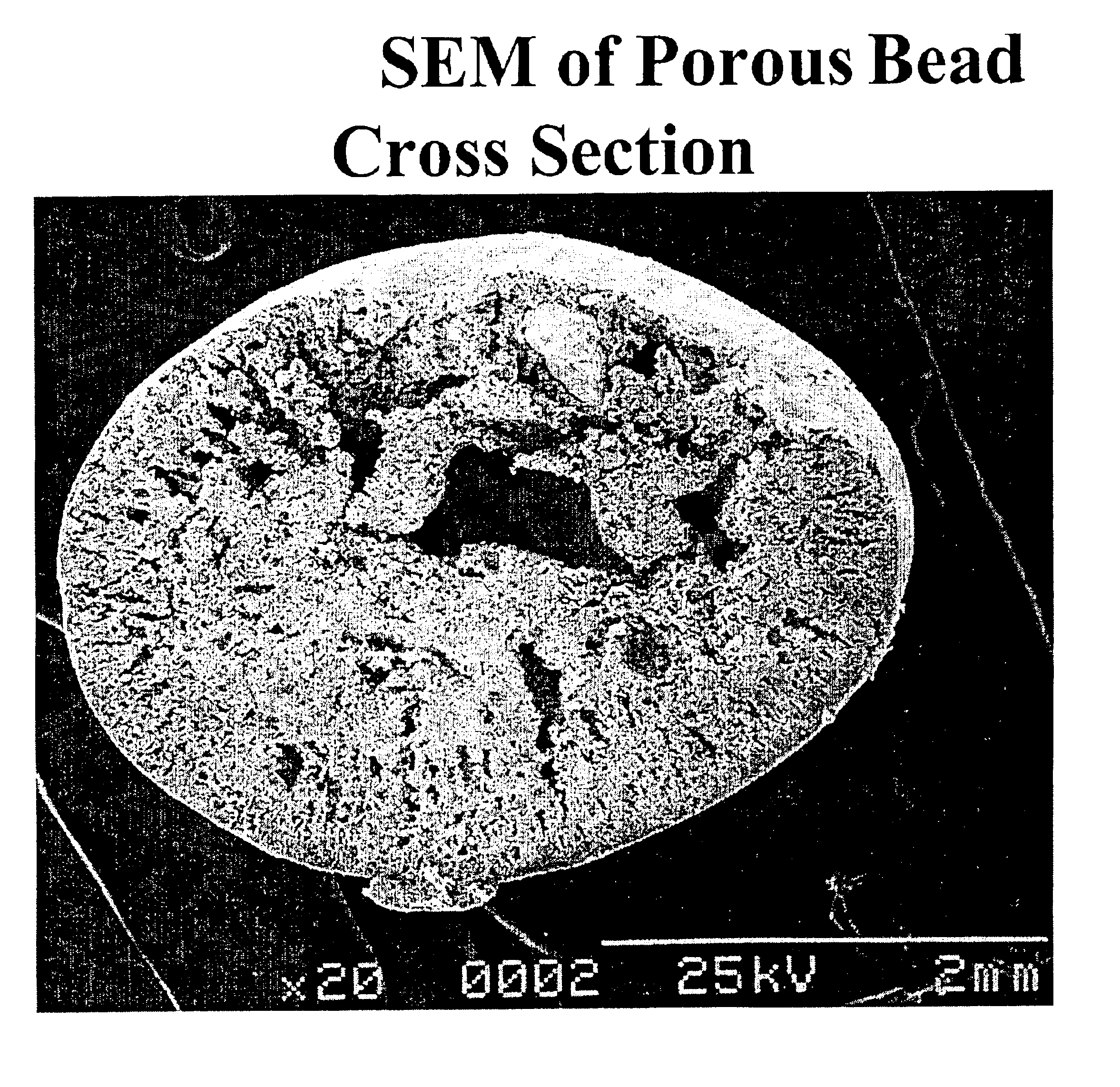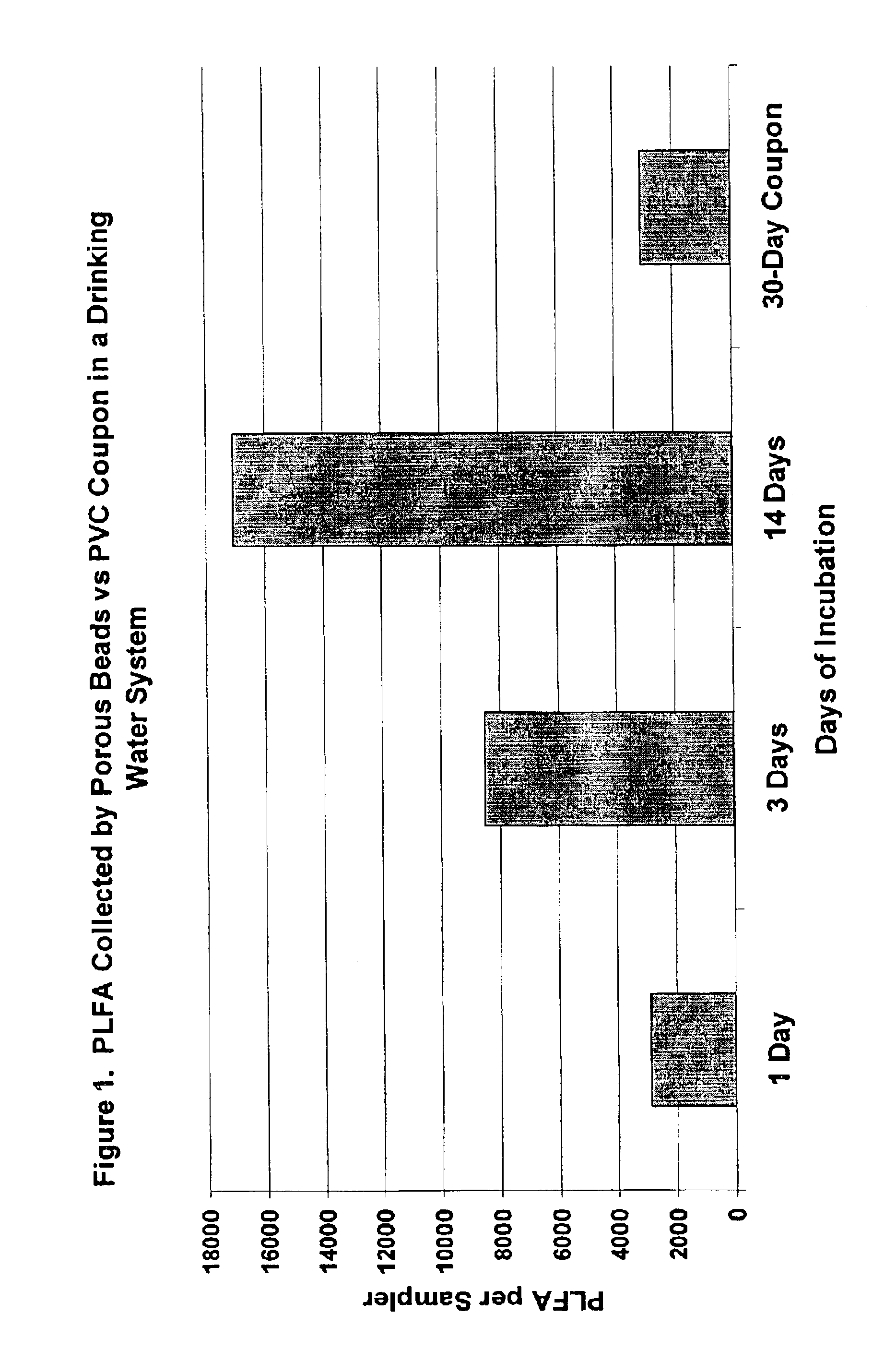Methods for forming microcultures within porous media
a technology of porous media and microculture, which is applied in the direction of sustainable biological treatment, water cleaning, biological water/sewage treatment, etc., can solve the problems of difficult to acquire a sufficient number of required organisms in order to reliably and accurately perform detection, characterization or identification assays, and achieves favorable growth environment, rapid and convenient operation, and accurate detection
- Summary
- Abstract
- Description
- Claims
- Application Information
AI Technical Summary
Benefits of technology
Problems solved by technology
Method used
Image
Examples
Embodiment Construction
[0029]The embodiments discussed herein are merely illustrative of specific manners in which to make and use the invention and are not to be interpreted as limiting the scope of the instant invention.
[0030]While the invention has been described with a certain degree of particularity, it is to be noted that many modifications may be made in the details of the invention's construction and the arrangement of its components without departing from the spirit and scope of this disclosure. It is understood that the invention is not limited to the embodiments set forth herein for purposes of exemplification.
[0031]In the present invention, highly porous beads are formed having very internal surface area. The beads used herein are very similar to the porous beads described in U.S. Pat. No. 5,486,292 to Bair owned by the Assignee herein, which is incorporated herein by reference. The beads of the present invention are preferably comprised of an aramid polymer selected from poly(m-phenylene isop...
PUM
| Property | Measurement | Unit |
|---|---|---|
| diameter | aaaaa | aaaaa |
| temperature | aaaaa | aaaaa |
| diameter | aaaaa | aaaaa |
Abstract
Description
Claims
Application Information
 Login to View More
Login to View More - R&D
- Intellectual Property
- Life Sciences
- Materials
- Tech Scout
- Unparalleled Data Quality
- Higher Quality Content
- 60% Fewer Hallucinations
Browse by: Latest US Patents, China's latest patents, Technical Efficacy Thesaurus, Application Domain, Technology Topic, Popular Technical Reports.
© 2025 PatSnap. All rights reserved.Legal|Privacy policy|Modern Slavery Act Transparency Statement|Sitemap|About US| Contact US: help@patsnap.com



